Prof. LUOXiaowei, a distinguished architect and architectural educator in China and a professor from the College of Architecture and Urban Planning, Tongji University, passed away at 6:30 p.m. on June 8, 2020 in Shanghai at the age of 95.
“In loving memory of the ever-elegant Prof. LUO!” “I want to review the History of Architecture in Foreign Countries!” ...After hearing the sad news, teachers and students of Tongji University have expressed their remembrance and sent condolences on their WeChat Moments.
The vanguard to offer courses, such as the Modern History of Architecture in Foreign Countries and to preside over the compilation of nearly 10 related textbooks
Since graduating from the Department of Architecture at St. John’s University in 1948, LUO Xiaowei has taught at St. John’s University since 1951, lecturing on the history of foreign architecture.
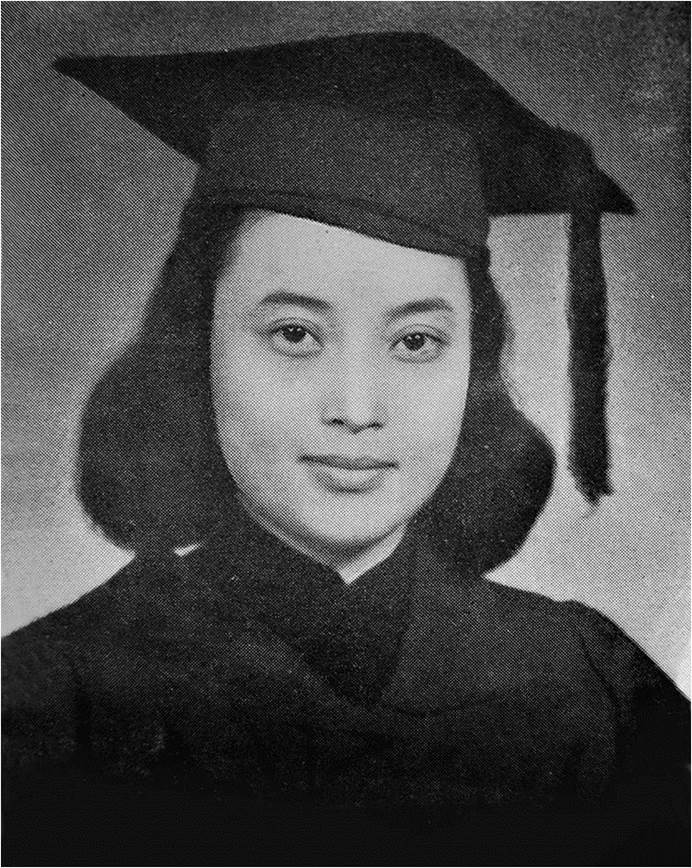
After a re-adjustment of the department in 1952, LUO became the founder of the Teaching and Research Office of Architectural History and Theory, Department of Architecture, Tongji University. Since then, she devoted herself to talents of cultivating and scientific research in the field of architectural history and theory over the past decades.

She pioneered the course Modern History of Architecture in Foreign Countries in domestic architectural schools, and worked diligently and collaboratively with her colleagues. The history of architecture is a complex subject that crosses many disciplines, and the compiling of textbooks about its history is actually a massive project that requires a multidisciplinary theoretical foundation and intellectual background in history, politics, economics, science, and technology. With her limited literature, she compiled textbooks and atlases, collected pictures, produced slides, established teaching archives, and successively presided over and compiled nearly 10 textbooks related to the history of Western architecture, to include: A History of Western Architecture (published in 1955); and A History of Western Architecture and Modern Western Architecture (published in 1957). These works influenced many relevant colleges and universities across the country.
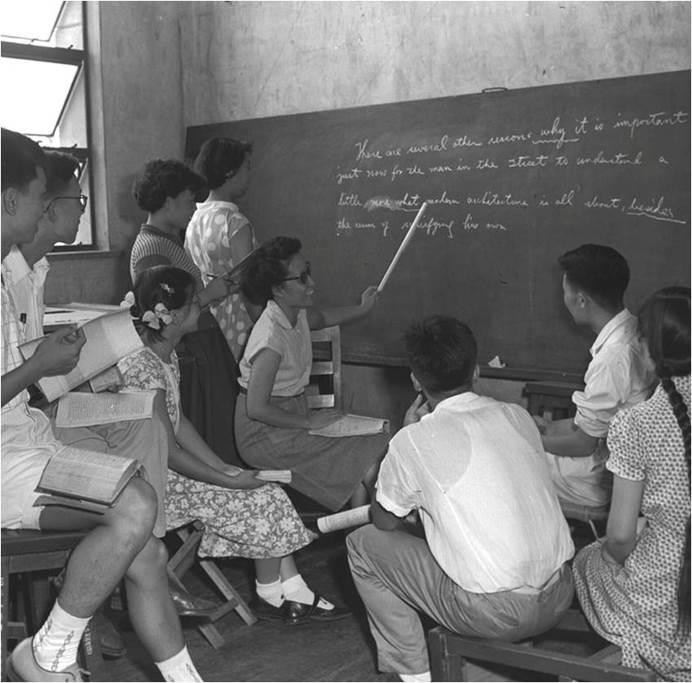
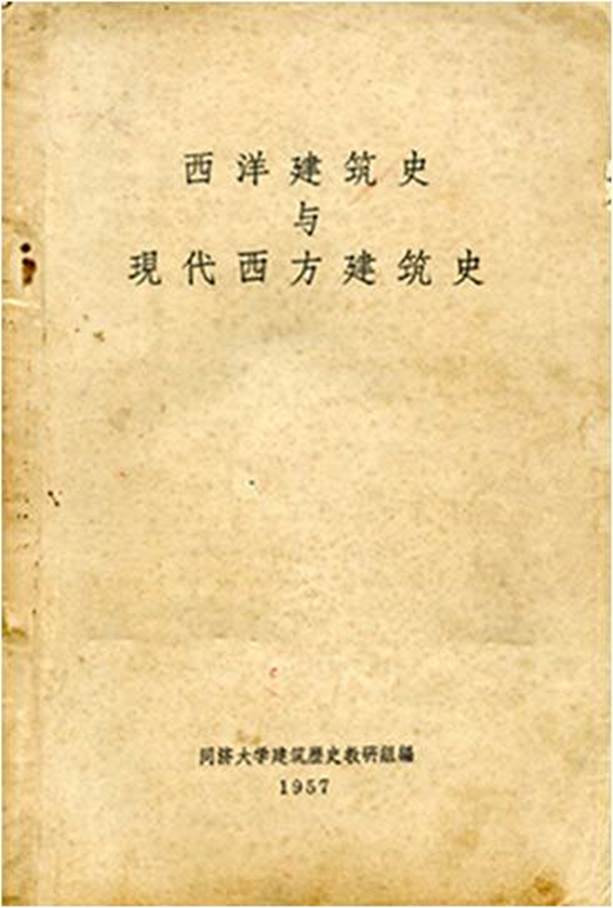
During that time, she was unable to travel abroad to physically inspect the world’s historical buildings. As a pioneer in this field, she could therefore rely only on her hard self-study and relentless diligence to move forward. In addition to texts, she also placed great emphasis on the accumulation of images. Her two publications, the Reference Atlas of the History of Architecture in Foreign Countries - An Annex to the History of Architecture in Modern Capitalist Countries in 1961, and the Reference Atlas of the History of Architecture in Foreign Countries - Part of the History of Architecture in Primitive, Ancient, Medieval, and Sprouts of Capitalism Periods in 1963, are based on the accumulation of long-standing, loose-leaf images by LUO and other teachers.
Bathed in the spring breeze of reform amidst the country’s Opening Up reform in the early 1980s, LUO was driven by her sense of excitement and a strong desire to develop China’s modern architecture to facilitate academic exchanges proactively with foreign counterparts—she exclaimed: “It’s like meeting an old friend!” She inspected many of the world’s historical buildings physically and was very excited to find many famous western cities containing the buildings that she had taught about for decades.
With full preparation, she ushered in the golden age of her teaching and academic career. She was invited to give lectures in major architectural colleges and universities in China, and those old photos continued to fuel her passion for lecturing. Her textbooks: Modern History of Architecture in Foreign Countries; and Illustrations of the History of Architecture in Foreign Countries, which she organized and compiled for national architecture colleges and universities, had been adopted for teaching. The former textbook, which she edited carefully and published in 2004 is now recognized universally as a textbook by more than 300 architecture colleges and universities throughout the China.
In 1983, LUO offered a course, Architectural History and Theory, which was initially an elective course and later became a compulsory course for all graduate students in the College of Architecture and Urban Planning. This course was intended to guide graduate students to gain a deeper understanding of Western contemporary architectural thought and theoretical trends via an in-depth study of Western architectural thought and practice, so as to arouse young students’ concerns and thinking about China’s architecture and even the process of global architectural development.
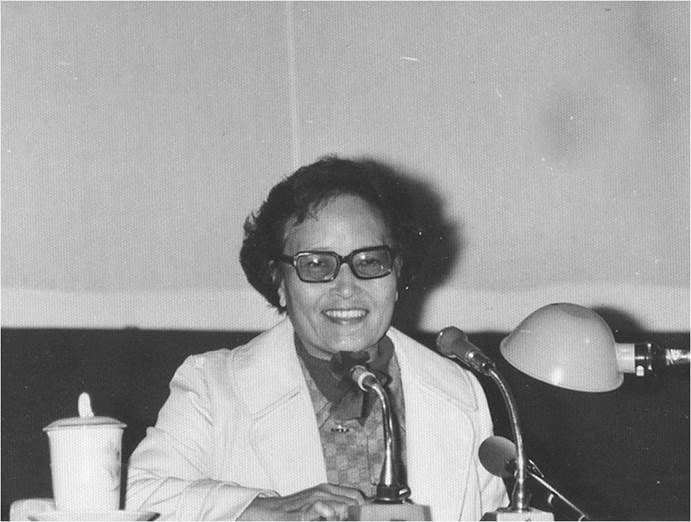
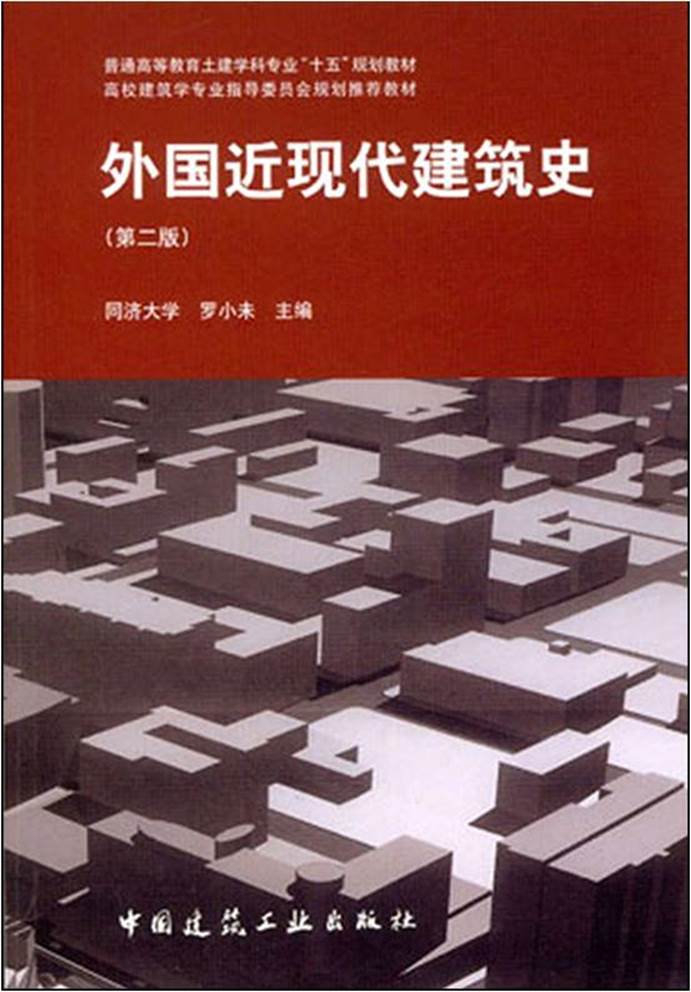
She cultivated and guided juniors carefully, and her knowledge and charismatic personality had a profound influence on later generations.
She was always elegantly well-dressed and wore a bright smile. In class, she was even in high spirits, so students respectfully called her “Prof. LUO.” “This form of address for her expresses the student’s heartfelt esteem for the erudite scholar and reverence for knowledge,” academician ZHENG Shiling said. Zheng still retains a class assignment and comments from Prof. LUO’s course called, Modern History of Architecture in Foreign Countries, in his junior year. The assignment talked about the relationship between the modern architectural movement and artistic trends, and Prof. LUOencouraged him that it could be published. “Her encouragement inspired me to love the architectural history and theory ever since,” academician ZHENG said. In 1978, when ZHENG returned to the Department of Architecture, Tongji University for his master’s degree in architecture, he was again able to listen to Prof. LUO’s teachings in the course on architectural history. Since 1990, he has been studying for his doctoral degree in architectural history and theory with Prof. LUO.
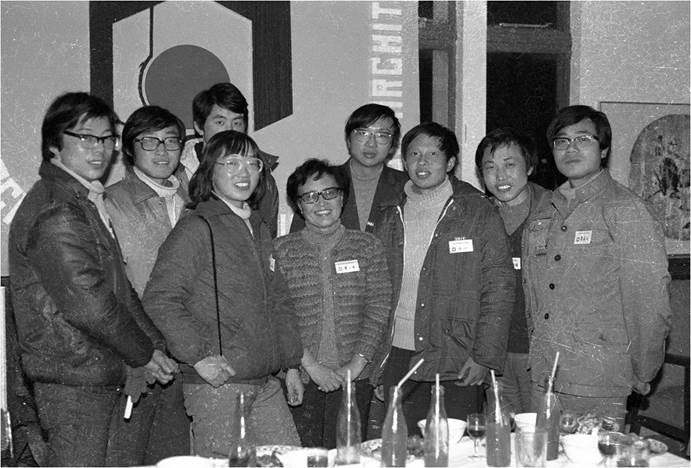
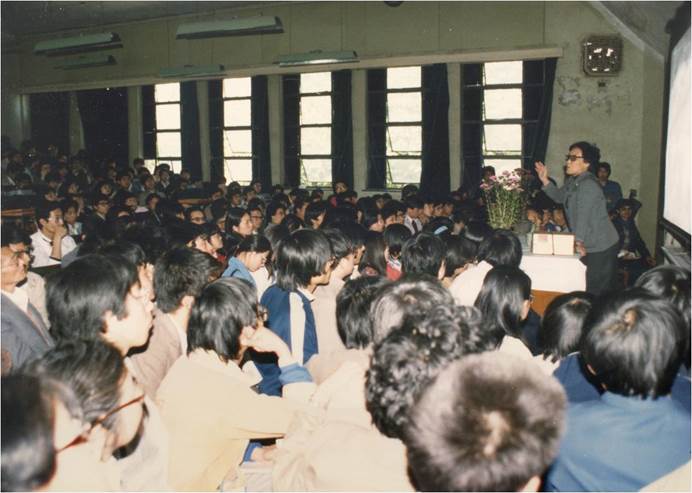
After earning his Ph.D. in the 1990s, CHANG Qing came to Tongji University to conduct his postdoctoral research at the College of Architecture and Urban Planning, where he cooperated with his co-advisor, Prof. LUO. “Not only is she prominent and inspiring in her professional teaching and research, but she also always let you feel the truth of ‘a grasp of mundane affairs is genuine knowledge’,” academician CHANG Qing said.
Prof. WU Jiang stated: “Over the years, Prof. LUOhas been one of the most important people in my academic career,” and “Prof. LUO’s scholarship is strongly open, contemporary, pioneering, and profoundly thoughtful, and we should pass on her academic ideas and carry them forward.”
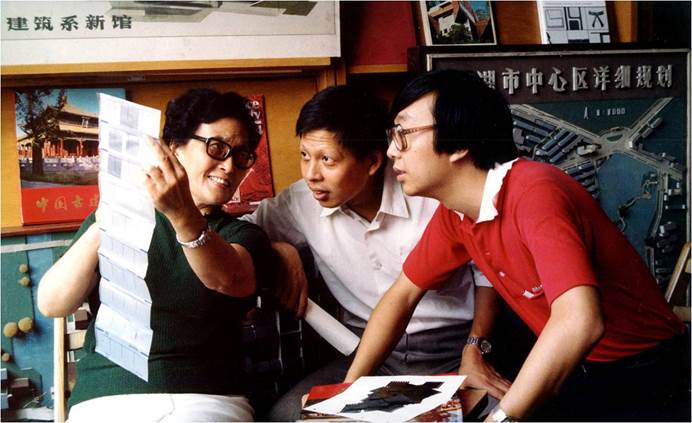
During the nearly 70 years of her teaching career in Tongji, she has been dedicated to teaching students, guiding juniors, and nurturing their talents for the country. She teaches and influences students with her rigorous style and keen academic thinking, and she introduces the younger generations to renowned scholars actively in international exchanges. She has cultivated many undergraduate students and mentored dozens of master’s degree and doctorate graduates who are now indispensable backbones and mainstays in architecture, planning, and industry.
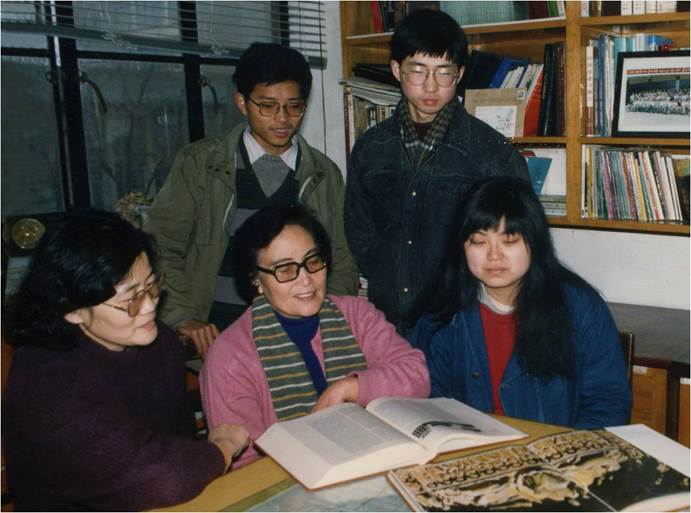
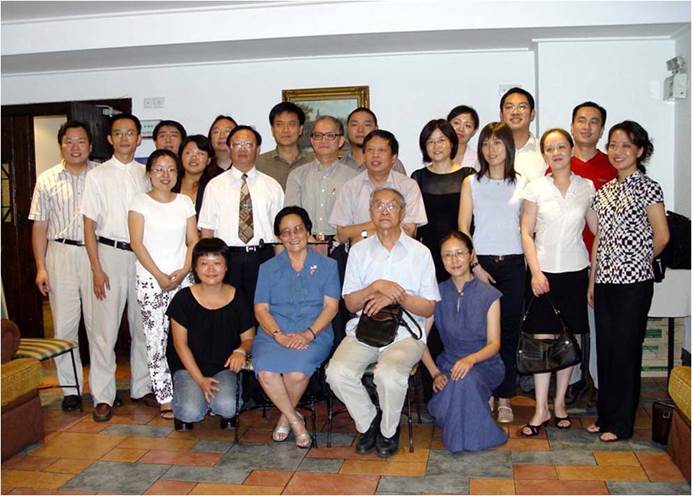
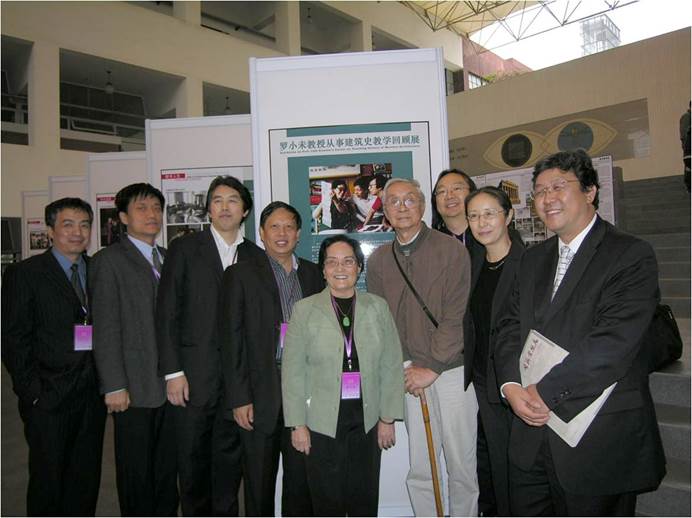
She has built up a teaching and research team in architectural history and theory that has involved four generations of scholars. Years after her retirement, her teaching and academic traditions have been inherited and developed, and continue to have wide-sweeping impacts. As one result, Prof. LUO was awarded the Special Award for Architectural Education by the Architectural Society of China in 2006,
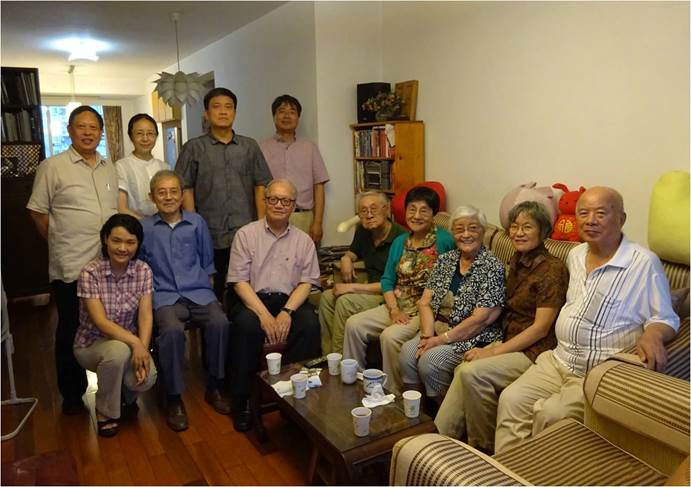
In the eyes of her student, Prof. LU Yongyi, Prof. LUO’s education is not limited to academics and teaching. She was also a lover of life. She emphasized that a wide range of interests and good manners are essential qualities for a teacher in this field, and she is one such senior with multiple qualities. From a young age, she had a variety of hobbies, including ballet, badminton, and was enrolled in the Vocal Music Department of the National Conservatory of Music.
She and Prof. LI Dehua fell in love with each other for a lifetime with their deep conjugal love. In March 2017, donated by alumni, this couple agreed to set up the “LI Dehua and LUO Xiaowei’s Design Chair” program, which is the first of its kind in China. Since then, the college has been inviting famous designers in the fields of architecture, planning, and landscape architecture from home and abroad to teach undergraduate or graduate students design courses for one semester each year.
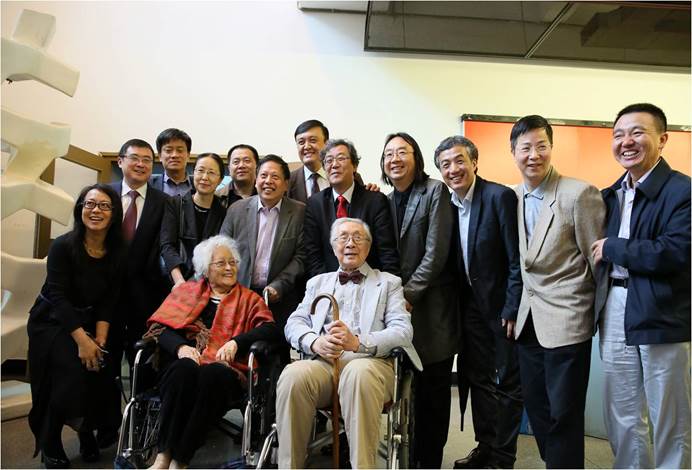
Introducing international architectural academic ideas, and effectively promoting the development process of modern architecture in China
In 1980, LUO published four articles in The Architect: Gropius and “Bauhaus;” Le Corbusier; Mies van der Rohe and Wright; and became the founder who introduced Western modern architecture to China. Since then, she has published articles, such as: Architectural Trends in the West in the 1950s and 1960s; The Generation of Western Modern Architects and the Generation of Architecture; and Using Symbolic Analysis to “Read” Contemporary African Cities, in the World Architecture and Architectural Journal.
“The introduction of academic thought and advanced experience of world architecture is not about ‘worshiping foreign things,’ but is the key to restart the process of modernizing our country’s architecture,” some architectural historians commented. Prof. LUO has visited, lectured, and studied in many cities and more than 10 famous universities in Europe and the United States, and she interviewed dozens of famous Western architects and architectural theorists. With first-hand knowledge and leading research, she introduced the achievements of Western modern architecture and various thoughts to schools of contemporary architecture into China for the first time. Academia believes this has had a profound impact, not only on domestic architectural education, but also on the promotion of it.
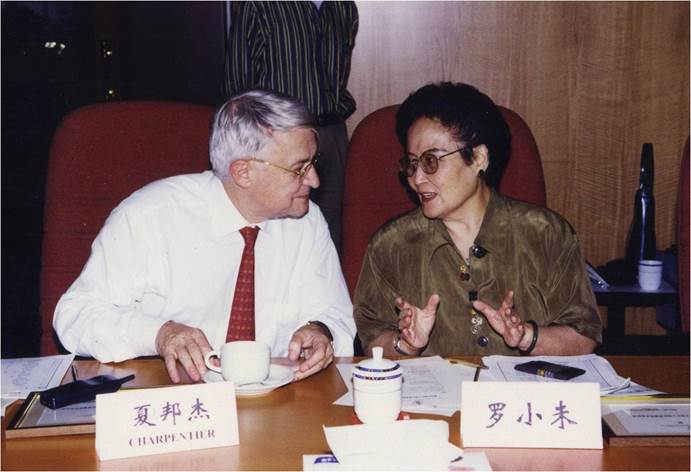
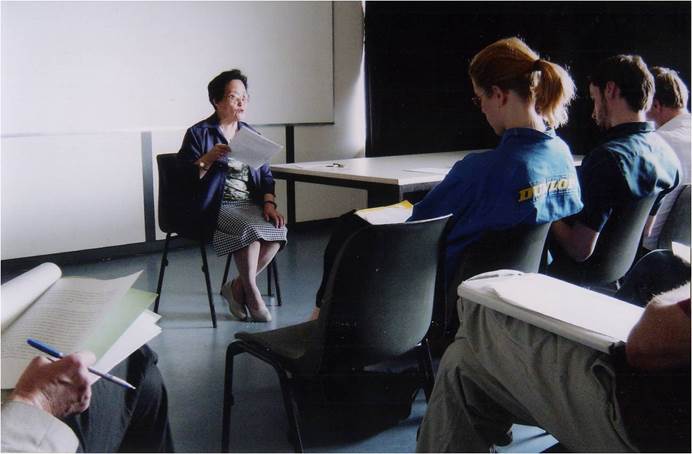
“The international exchange, advocated by Prof. LUO, is not a one-way import of Western culture. She plays an important role in the cultural exchange between the East and West,” her followers said. During her visits to prestigious universities abroad, Prof. LUO’s lecture series focused on traditional Chinese architecture, classical gardens, and Chinese spatial thinking, making them a valuable contribution to the spread of Chinese architectural culture in the West.
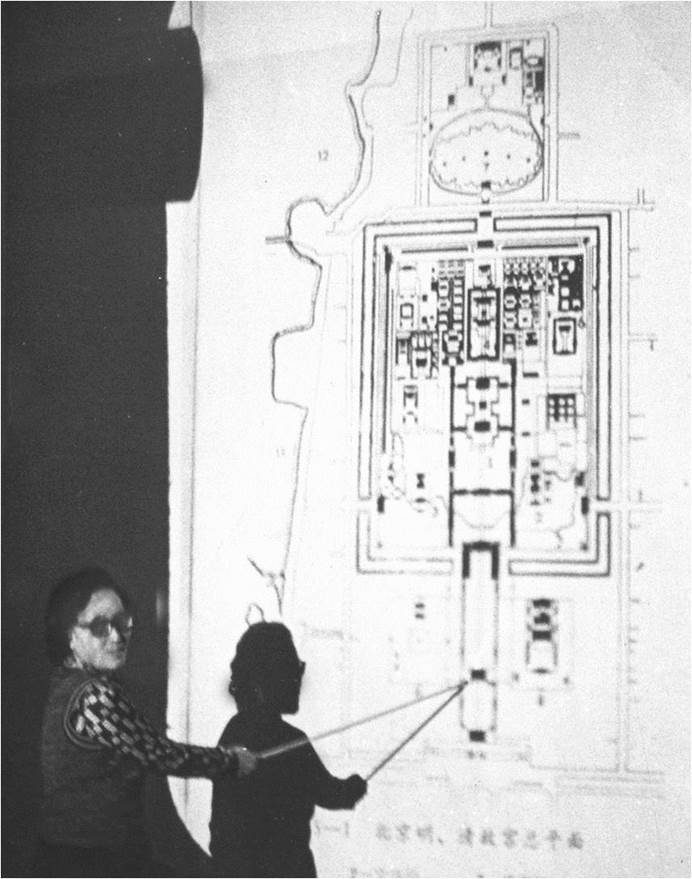
She was one of the first scholars in China to suggest the study of foreign architectural history must break the “Western-centrism.” She has long broadened her horizon beyond the West to Islamic and Third World architectures. LUO served as editor-in-chief with many world-renowned architectural theorists on the book, 20th Century World Architecture Boutique Collection, which she edited for the 20th World Congress of Architects of the International Union of Architects (UIA). In 1998, she was selected as Honorary Fellow of the American Institute of Architects (AIA).

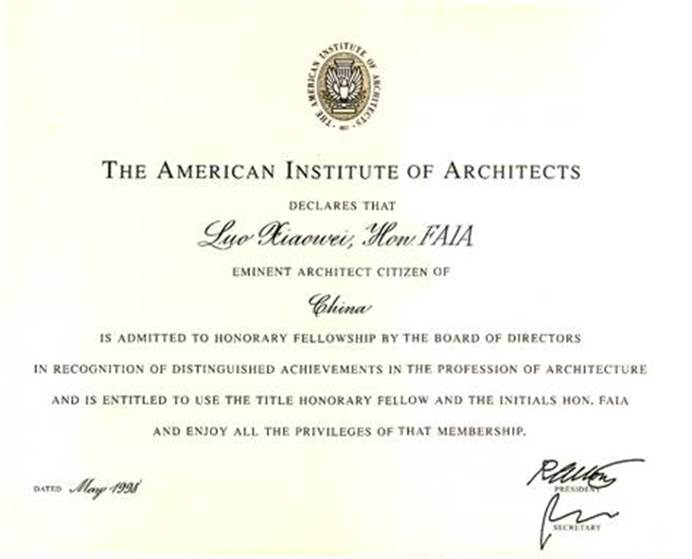
She advocated architectural history should be driven by its theory, and was the earliest scholar whom established the Trinity of Architectural Theory, History, and Criticism. She has always strived to maintain independent thinking and a rational, critical attitude towards architectural issues. In the early 1980s, some hotels in Shanghai blindly pursued the “modern atmosphere” of all-glass curtain walls in foreign countries during their construction. She took a cautious attitude towards this and put forward the suggestion that “the pros and cons of all-glass curtain walls must be analyzed before making decisions.” At the outset of the rapid development of high-rise buildings, she studied and discussed the urban issues, construction techniques, energy efficiency, and cost problems of high-rise structures in an effort to promote rational thinking about architectural development.
She paid more attention to the academic development. In 1984, she founded an important academic journal of architecture, The Architecture Times, and published A Tentative Research on I. M. PEI Architectural Theory as its first issue. In 1989, she published the paper, Architectural Criticism, in the Journal of Architecture, laying the theoretical foundations for architectural criticism. The Collected Works of Luo Xiaowei, published in 2015, includes dozens of her papers on Western architectural history, architectural theory, architectural history research, urban culture and architectural heritage protection, and educational thoughts from which we can get a glimpse of this academic trailblazer’s solid footprint.
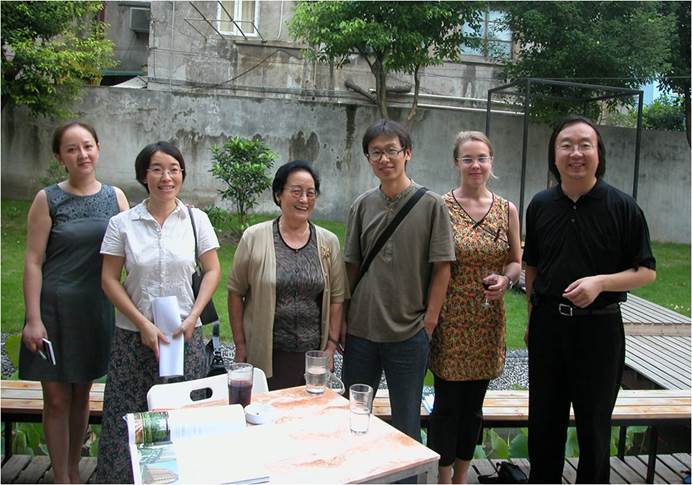
She was directly involved in guiding the practice of historic building conservation in Shanghai, and her research results have become classical literature.
Not only do cities need to have personalities, but districts need to have their personalities as well. The best, most valuable, and existing personalities are the inherent historical and cultural characteristics of the region. These features are neither given nor taken or taken or copied by others. Therefore, the key to the success of this planning study lies in the following: how to make full use of the potential of these personalities and characteristics; how to coordinate the relationship between the transformation of the old city and the preservation of the historic landscape; and how to promote the functional upgrading of the old city while preserving the historical context of the region.
This text is abstracted from the book, The Yesterday, Today, and Tomorrow of the Northern Old Hongkou in Shanghai - A Study of Conservation, Renewal and Development Planning, edited by Prof. LUO, who was in charge of this research project. A series of monographs, such as the Guide to Shanghai Architecture, Shanghai long tang and Shanghai Xintiandi: A Study of the Architectural History, Human History and Development Patterns of Old District Reconstruction, are her precious achievements in the study of modern architecture and city in Shanghai and have now become classical literature in this aspect.
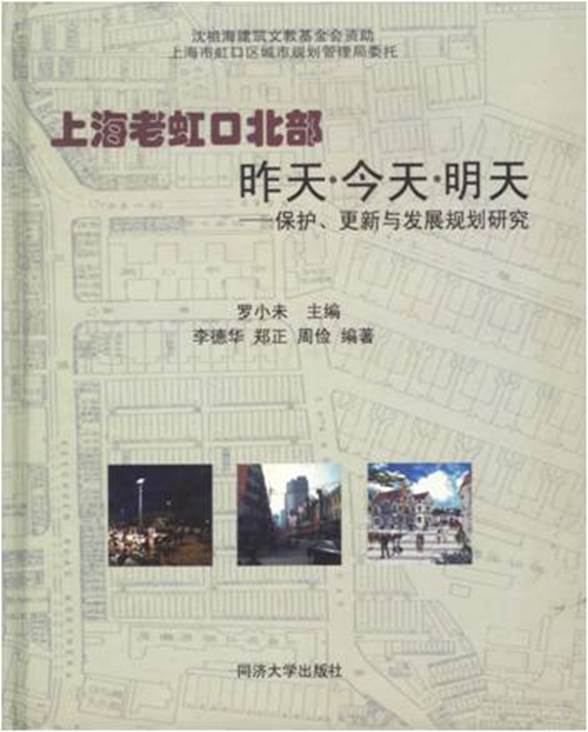
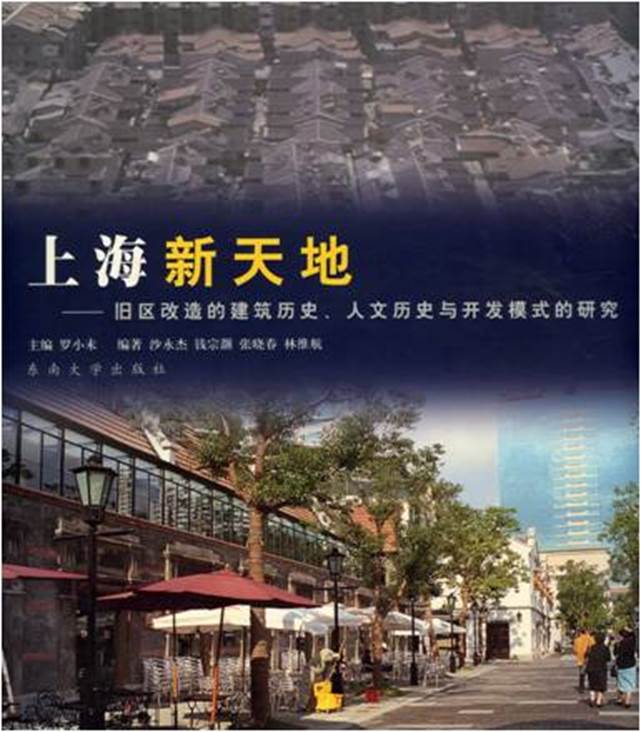
Prof. LUO served as Chairman of The Architectural Society of Shanghai China for many years. As a pioneer in the study of modern architecture and city in Shanghai and the preservation of historical and cultural heritage, she has made unique impacts and major contributions to the preservation of Shanghai’s historical and architectural heritage. A series of monographs on modern architecture in Shanghai were edited and co-edited by Prof. LUO, becoming guidelines for the conservation of Shanghai’s historic buildings and the results of her research are considered to be important in promoting a new understanding of the value of historical architecture in society. Not only has she played an important role in establishing a series of architectural cultural heritage protection systems in Shanghai, but she has also been involved directly in guiding most all of the legislative protection and architectural reconstruction of Shanghai’s excellent historical buildings.
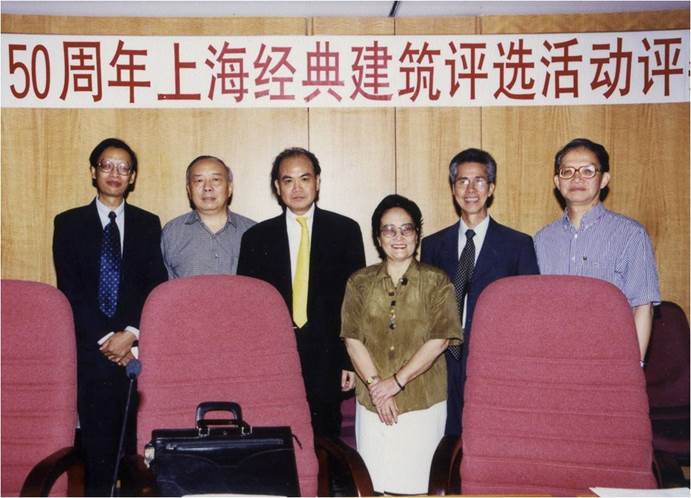
In making important academic contributions to the study of modern architecture and the preservation of historical buildings in Shanghai, she garnered a large number of practical achievements in architectural design. She was an active consultant for the Tongji Architectural Design (Group) Co., Ltd., and has won several national and Shanghai Awards for Outstanding Engineering Survey and Design. The following projects embodied her wisdom, to include the protection of the historical features of Huaihai Rd.; the protection of the Gutzlaff Signal Tower; the restoration and renovation of the Bund No. 3, No. 6, No. 9, No. 12 and No. 18; and the protection and renovation of the “Moller Villa,” “Xintiandi,” and “Bund Source.”
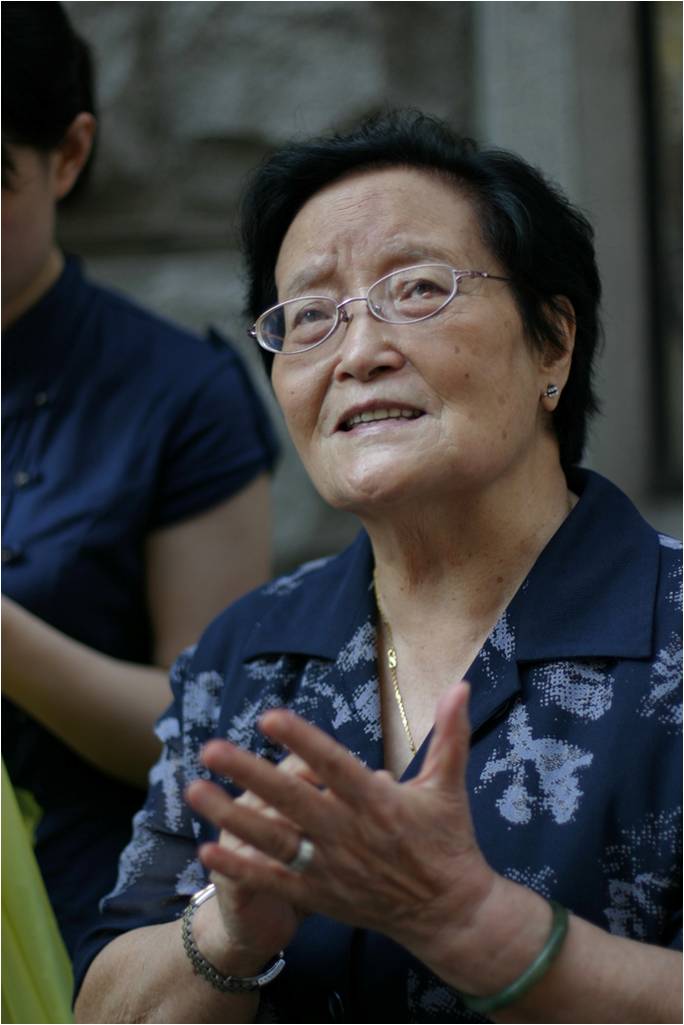
As heartfully expressed by all of the students and faculty members of the College of Architecture and Urban Planning: “Prof. LUO--We will always miss you!”
Source: https://news.tongji.edu.cn/info/1003/74001.htm